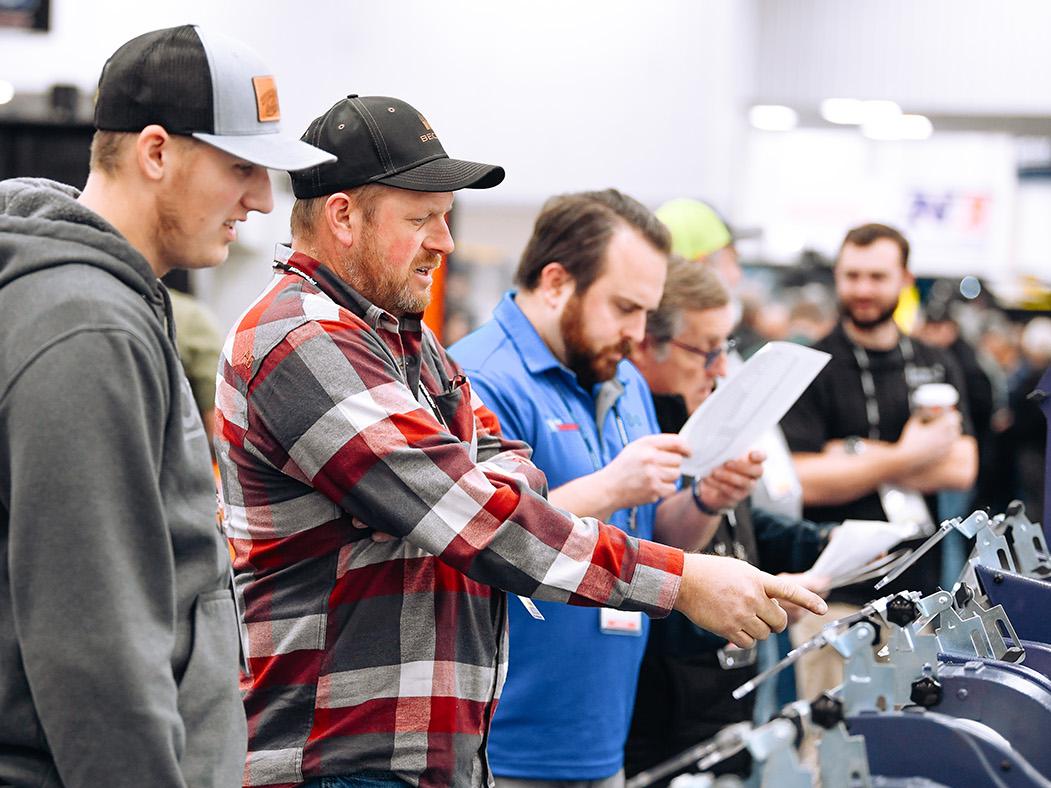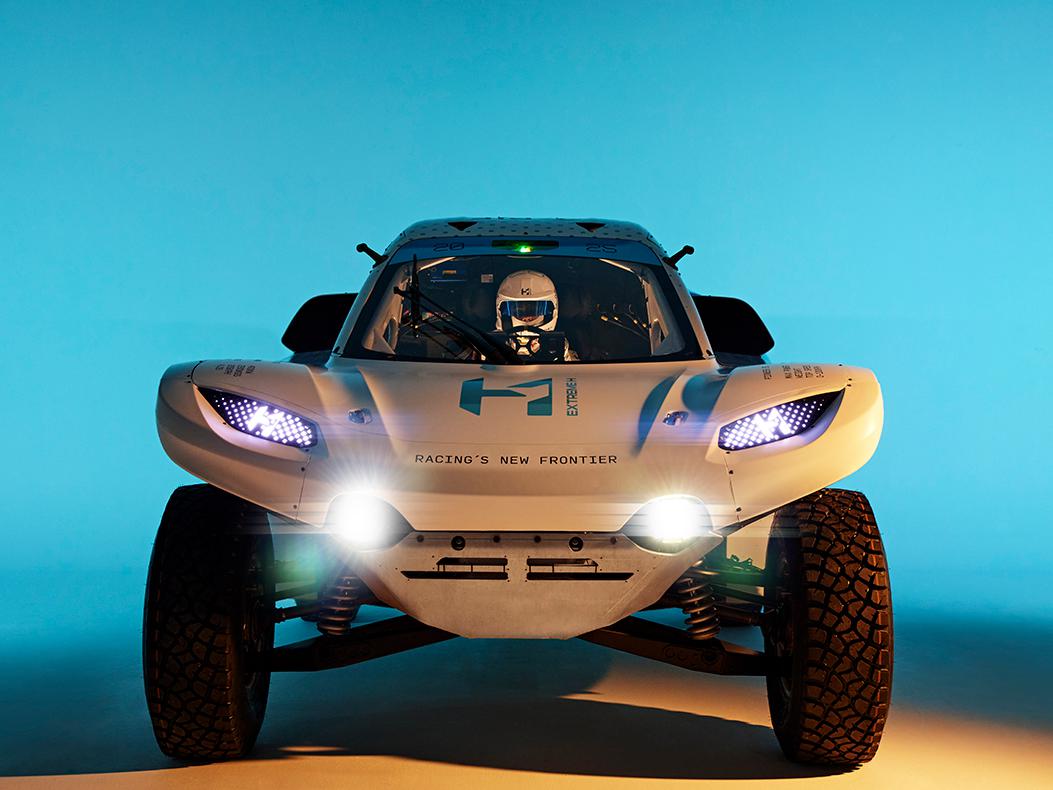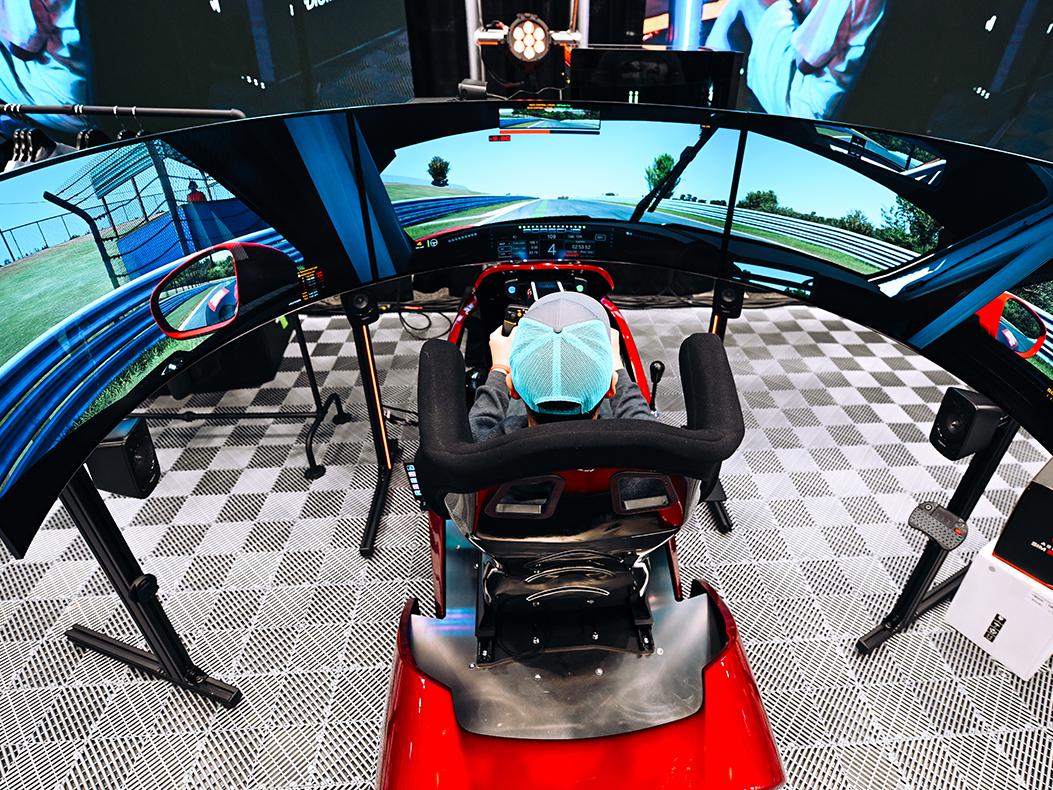Special Report: Women In Motorsports
Cara Adams, Bridgestone Americas
Our all-female panel of distinguished industry leaders offer candid perspectives on equity and expectations within the sport, what attracted them to racing, and where there’s still room for improvement in a traditionally male-dominated field.
Racing, and automotive performance in general, has traditionally been considered a masculine interest, but through the accomplishments of racers like Leah Pruett, Simona de Silvestro, and Natalie Decker, that perception is slowly starting to change. And as women continue to represent an increasingly stronger presence on the grid, they have the potential to inspire and influence the next generation of would-be competitors, in turn promoting a more diverse and inclusive environment overall.
But while the headway made on track is often self-explanatory, advances behind the scenes of racing in fields like engineering, logistics, and management tend to be more difficult to quantify. With that in mind, we sought perspective from women whose career paths have followed that side of the equation. Through that perspective, the goal is to get a better understanding of where the inroads to this traditionally male-dominated industry are, what kind of progress is being made, and where there’s still room for improvement. It’s the kind of insight that can point the way toward better engagement with younger generations, and keep motorsports headed in the right direction.
Participating in our discussion are Cara Adams, Director, Race Tire Engineering and Manufacturing, Chief Engineer, Motorsports at Bridgestone Americas in Akron, Ohio; Kim Pendergast, CEO of Magnuson Products in Ventura, California; Jill Gregory, Executive Vice President and General Manager at Sonoma Raceway in Sonoma, California; Amy Faulk, CEO of Hypertech in Bartlett, Tennessee; Krista Elliott Riley, Partnership and Event Manager for Wayne Taylor Racing in Brownsburg, Indiana; and Rena Shanaman-Tenorio, Chevrolet Detroit Grand Prix Event Director; Partner in Ball, Shanaman & Tenorio in Farmington Hills, Michigan.
PRI: What was it that led you to pursue a career in motorsports?
Cara Adams: My interest in motorsports developed through my interest in engineering. Growing up I had a passion for science, no doubt influenced by my mom, who was a science teacher, and my grandfather, who was an engineer at NASA.
While I was in engineering school, I was invited to go check out the machine shop where they design and build Formula SAE race cars at the University of Akron. Aside from the time I’d spent helping my dad rebuild the carburetor in his Beetle, I didn’t know much about tools or cars at that point. But I walked into this machine shop, started asking questions and learning about what they did, and realized that this stuff looked pretty fun. And after I got to ride in a Formula SAE car, I thought that if I could establish a career where I got to work with race cars, I’d have it made.
Kim Pendergast: My interest in motorsports came by way of a colleague of mine in another industry who was a big enthusiast. I invested with him and started going to the SEMA shows, and I realized that there were smaller companies within this industry that I could afford to acquire with my own money.
There are a lot of industries that you’re just not going to be able to enter into that way; the scale is too big. I’ve been an entrepreneur for almost my entire life, and I wanted to own and run my own company, but I also felt like I could bring something to the party even if I hadn’t been in the industry from the very beginning. My hard knocks were in other industries, but those lessons still apply in this one.
Jill Gregory: I didn’t necessarily set out to have a career in motorsports, but I’ve always been interested and involved in sports marketing. I’ve also always been a sports fan, and I’ve had a chance to work at a few agencies along the way that had brands with sports portfolios, and NASCAR ended up being one of those.
Growing up I wasn’t a huge racing fan, but my cousin brought me to a few races and just the experience of it all really had an impact on me—nothing compares when you have the sights, sounds, and the scale of what we do right in front of you. Going to races is a very unique experience, and that part of it has always intrigued me. So when I had the opportunity to work with this industry on a deeper level, I actively pursued that.
Amy Faulk: It was almost by accident, really. When I was growing up we didn’t have a lot of money—my mom worked and my dad had a radiator repair shop, and they couldn’t afford a babysitter, so my brother and I stayed at my dad’s garage. To keep us busy he would give us tasks to do, and I just learned a lot and got familiar with car parts. My mom was a beautician, and when I got older I would go and stay with her and help around the salon, but I liked the garage—it was more fun than being in that beauty shop atmosphere.
When I started in college, I wasn’t really sure what I wanted to do. But then I met my husband, who raced and was a mechanic at a Volkswagen dealership, and he was instrumental in me getting my first job at Racing Head Service (RHS) in Memphis, Tennessee. I was racing back then as well, and between that and my job at RHS I was able to form good relationships with people across the industry. It didn’t hurt that the pay was better than my previous job as a medical assistant, either.

But I had a real turning point after the NHRA World Championship. [Editor’s note: Amy won the 1979 NHRA Super Stock championship.] Everybody just expected me to take on a career in racing—go to Top Fuel or Funny Car, or something like that. But while I love winning, wins are a momentary thing, and my accomplishments in business were more satisfying because they had a lasting impact. I wanted to challenge myself beyond the race track.
Krista Elliott Riley: My initial connection with motorsports came about when I was working for three radio stations in Orlando, Florida. I was running a new business development team that was focused on finding new dollars from manufacturers, and to do that, we would design these promotions. While doing that, I formed a good relationship with the promotional director at Daytona International Speedway putting together giveaways and things like that, and I started working directly with teams to get prizing so that we develop these end-aisle displays that would help the manufacturers push product through.
That’s how the initial connection to racing was made, but the promotional director at one of those radio stations was also Wayne Taylor’s next-door neighbor, and one day he explained to me that Wayne was looking for some help and that we should talk. That’s how I ended up working with Wayne, and I learned everything from the ground up from there—activating PR, events, promotions, business tie-ins, and how to work with a race team.
Rena Shanaman-Tenorio: It was more by fate than design, really. I wanted to volunteer to work on a jazz festival that takes place in downtown Detroit every year, and I decided to go to the promoter’s office to express my interest.
This was a few months before the first Detroit Grand Prix and they were right in the middle of getting ready for this brand-new event, so they took my information and said that they would contact me later. The next day they called me and said that if I would be willing to help out at the race, they’d make sure I got a really good position at the jazz festival.
I agreed—my brother is an avid F1 fan, and he was really excited about the race coming to town, so I figured it wouldn’t be half bad. A lot of the same locations within the venue for the race paralleled with locations for the jazz festival, so I thought I could gain some experience from it and kind of get the lay of the land.
They assigned me to coordinate all of the entertainment that was coming in and out of Hart Plaza—I never saw a race car that weekend as I was basically in an underground control center, but I really enjoyed working on the event. A few months after that I was asked to be part of a small committee to create a volunteer organization that would support the Grand Prix, and that’s how I really got further involved in motorsports. At the start of my career I obviously delivered results, but I also feel very fortunate that one opportunity progressively led to another as time went on.
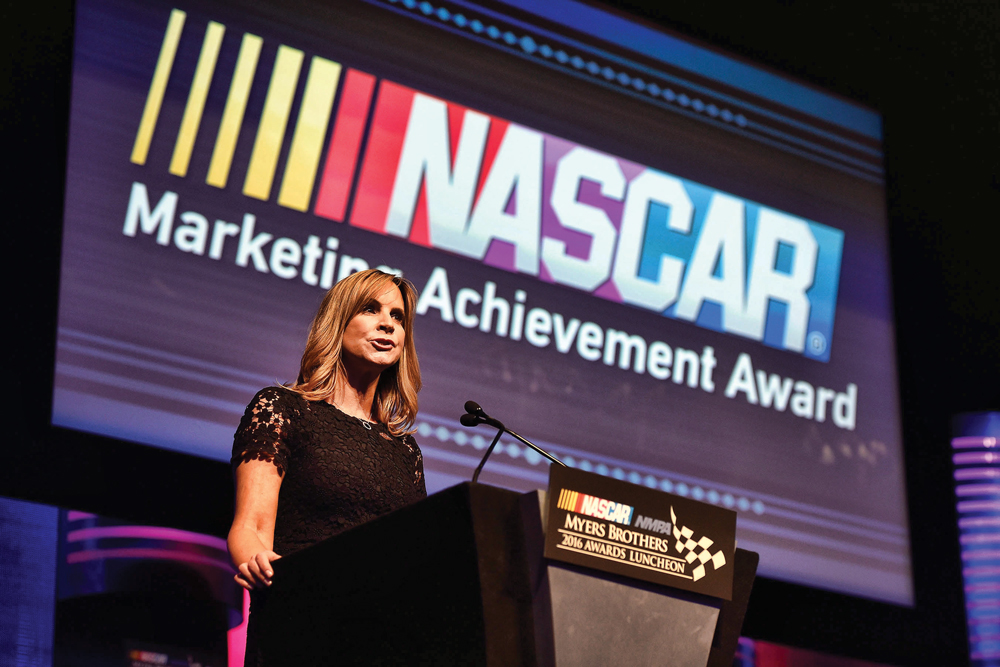
PRI: Do you feel that there’s more pressure on you as a woman in a traditionally male-dominated industry? Do you feel the standards are the same?
Adams: I’ve always put a lot of pressure on myself because I’m female; I always thought that I needed to go in and work twice as hard in order to prove myself. In certain cases with certain people you may have to work a little bit harder in order to do that, but in general, I don’t think expectations of me were really different from anyone else. That’s the beautiful thing about motorsports: It’s all about results. If I develop a tire that everyone loves, nobody cares if a man or woman designed it.
Shanaman-Tenorio: I’ve always worked with the true professionals in this sport, and I think that the expectations to deliver have been the same. But there’s also no question that early on in my career, as a woman in motorsports, I wasn’t given as much inherent credibility as perhaps some people would have given a man in the same role. I think there would have been more assumptions that I had the skills to do the job, whereas in my situation I had to demonstrate those abilities to some people—mostly at the lower management level—along the way to win that trust.
Pendergast: I think the pressure in this industry is less about your gender and more about being competent in your craft and authentically part of the club. This industry values people who know and love their product.
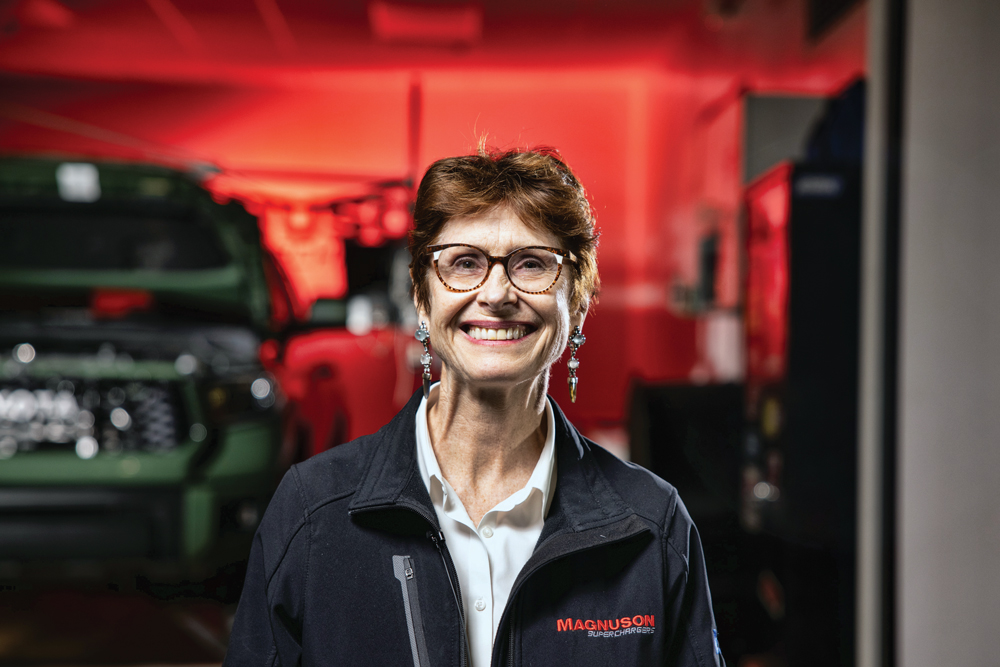
PRI: Do you feel that this industry is welcoming to women? Is it an attractive career path for young women?
Gregory: I don’t think there’s been a particular issue where I’ve had to overcome the sorts of obstacles that you might find in a number of other industries. The fact is, when we’re in an auto manufacturer meeting, or we’re in a meeting with some top marketing executives, there are many times when the women in the room are the obvious minority.
I think that the motorsports industry has been welcoming to me, and I would recommend it to any woman who likes sports. This is somewhere that I think you can be really successful.
Faulk: I definitely believe that there’s great opportunity here, and more opportunity for women in this industry than there has been in the past. It comes down to preparation, and you have to have the passion for it. To me, there’s nothing better than the sound of a well-tuned engine with the right exhaust—that’s just music to my ears.
There’s going to be all kinds of challenges, but if you like it, you’ll grow and learn from those challenges.
Riley: I can only speak from my experience in sportscar series, but I think it is a welcoming environment. It’s an industry with a very entrepreneurial spirit—you have to learn a lot, and you’re constantly shifting between challenges great and small. One minute you might be handling a small issue for a driver, and the next minute you’re in a boardroom as part of a multimillion-dollar negotiation. If you’re someone who wants to avoid being bored or pigeon-holed, it doesn’t get any better than that.
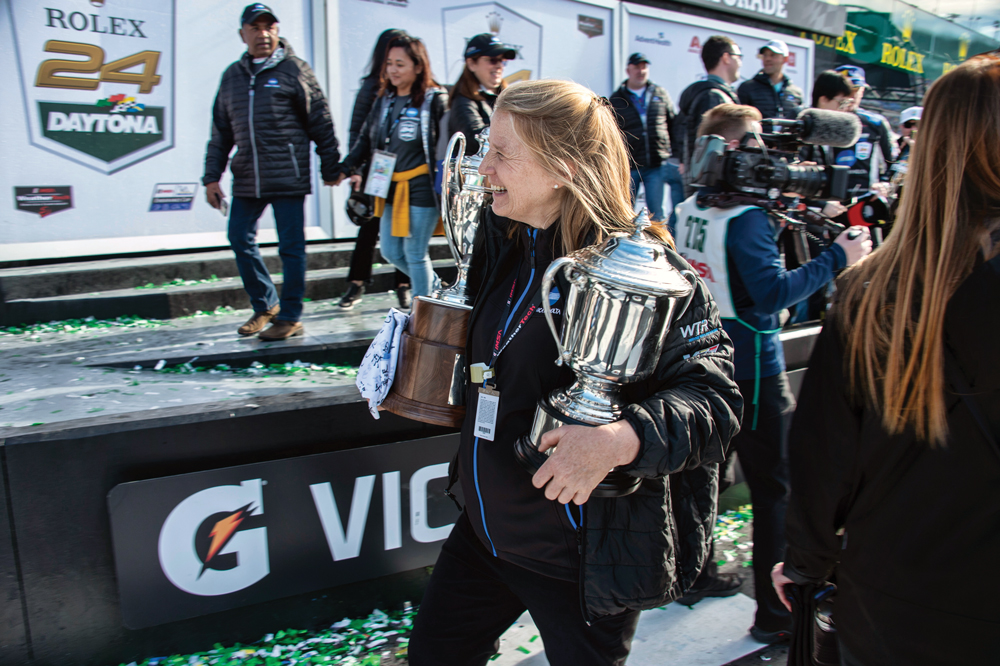
PRI: Are there areas where the industry could do better in that regard?
Faulk: The biggest issue I see is that you go take on a job with a company, and sometimes you just get overlooked—some employers may not see that potential in you and may not give you the opportunity to participate. It’s a situation where, for instance, a company picks a team to go to the SEMA Show, and all of the sales guys end up going while the women are kind of left behind; they’re not even asked if they want to participate.
It’s important for these women to have those face-to-face meetings. If they’re not there, they’re not networking and they’re not getting the experience, and that prevents them from having the tools they need to succeed and move up the ladder. You might be the most qualified person for a given job, but if you’re not in the heart of things, someone else might get picked over you just because that potential employer knows that person from meeting them at a show, a race, or some other event.
Adams: I think we’re making great strides right now, but, of course, there are areas where we can still improve. Situations like when I made the transition from being an engineer into being an engineer and a leader of others: The first year that I had a female engineer working for me on a small team, it opened my eyes to the things that I thought were OK as a female engineer versus the things that I am willing to tolerate with one of my engineers. Certain environments and certain attitudes toward women are a little more apparent when you’re shepherding other people through the sport.
IndyCar is great, though—I’d say 99% of the people in IndyCar are very welcoming and supportive. But I think continuing to have talks with race teams about diversity and giving people a chance is always good.
Shanaman-Tenorio: Various series have been focusing more on developing the talent of women who race. But as an industry, it’s almost expected to be “grassroots” progress in terms of bringing more women into other roles outside of the cockpit. There isn’t the same concerted effort to attract women into the engineering and pit crew jobs, along with the administrative side of the business. And I think that’s happening in part because there hasn’t been a defined need for it, but certainly there could be more women in all of those aspects of motorsport.
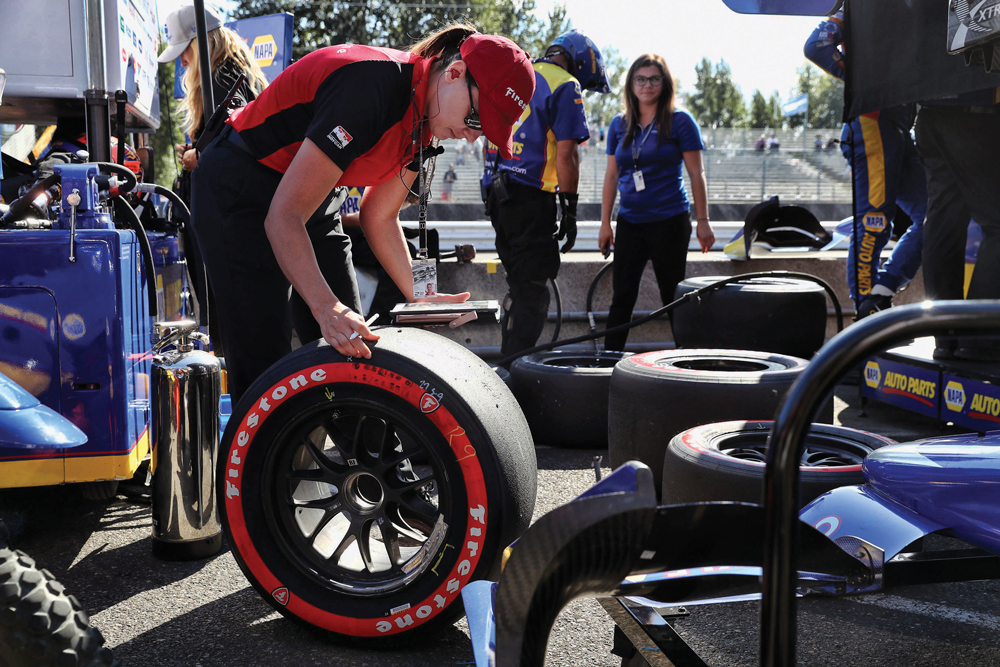
PRI: Do you have a professional role model or mentor, or someone who inspires you?
Adams: I’m going to start with Judith Resnik, an astronaut from Akron, Ohio, who was on the space shuttle Challenger. She’s been a role model of mine not only because she was on the shuttle doing all this advanced scientific research, but also because of my connection to NASA through my grandfather’s engineering work there.
Once I started following racing, Janet Guthrie became another role model for me—I was always impressed by what she was able to do and the barriers she was able to break down in motorsport. And I would be remiss if I didn’t point out that my mom has also been a great role model for me as well.
Shanaman-Tenorio: One person that immediately comes to mind is Vicki O’Connor—she and I became good friends, and we were colleagues. She was one of the first women I worked with in a senior position in motorsports.
Another is Shannon Shafer. Shannon and her husband owned a company that contracted with racing organizations on both the operational side and the sponsor sales and servicing side, and she definitely set a standard of professionalism for me.
Riley: I tend to gravitate toward folks who have a strong sense of integrity, and those who expect more of themselves. I think of Wayne and Shelley Taylor for their deep conviction and can-do attitude, and how that approach can be seen in our crew and our engineers.
I also think of Angela Hall, who has revamped the credentialing system at IMSA, and Emily Nash, who has revitalized our paddocks and victory lanes. And Sarah Robinson, who brought such incredible creativity and energy to our paddock when Michelin first came aboard.
PRI: What’s the most important lesson or piece of advice you’ve carried—and that’s served you well—through the years?
Adams: You control your own destiny; don’t let anyone tell you what you can or cannot do. And one of the best lessons I learned early on was that if you want something, just be persistent.
Faulk: Avoid lip service; if you say you’re going to do something, do it. And don’t be afraid to get dirty when you need to.
Riley: If something’s not working, be willing to move on to the next idea. It’s okay to fail, but “fail quickly.” Other than that, just be kind, be persistent, and be creative.
Shanaman-Tenorio: Be credible; know what you’re talking about before you open your mouth. If you get caught in that sort of situation, I think it tends to hang over you longer as a woman.
Pendergast: Probably one of the smartest guys I ever worked for once told me, “Kim, you have a balance sheet. Here’s what you contribute to a company, and here’s what you get paid by that company. Always make sure that the first figure is bigger than the second one.” Life is really that simple. At the end of the day, employees have to bring more value than they cost. So if you have some quirks, you better be pretty exceptional.
But the best advice I ever received was from the president of the company at my first job. He said, “Kim, you should give your ideas away—you have so many of them, you don’t need them all. If you give a few of them away to other people, they will remember it.” It took me 20 years to be able to do that.
Gregory: Don’t be afraid to speak up, be who you are, and have a point of view. Be confident in your abilities. In a situation where you might be one of the only women in the room and you want to perform well and make the right decision, you have to have almost an extra boost of confidence early on. But if you know this is where you want to be and you have a passion for the work, express that. If there’s a doubter out there—even if it’s yourself—going back to that fact that you’ve got something to contribute to the sport is something that will keep you where you need to be.
SOURCES
–
Cara Adams, Bridgestone Americas
bridgestoneamericas.com
Krista Elliott Riley, Wayne Taylor Racing
waynetaylorracing.com
Amy Faulk, Hypertech
hypertech.com
Jill Gregory, Sonoma Raceway
sonomaraceway.com
Kim Pendergast, Magnuson Products
magnusonsuperchargers.com
Rena Shanaman-Tenorio, Chevrolet Detroit Grand Prix; Ball, Shanaman & Tenorio
detroitgp.com; ballshan.com
 MEMBERSHIP LOGIN
MEMBERSHIP LOGIN JOIN PRI
JOIN PRI
